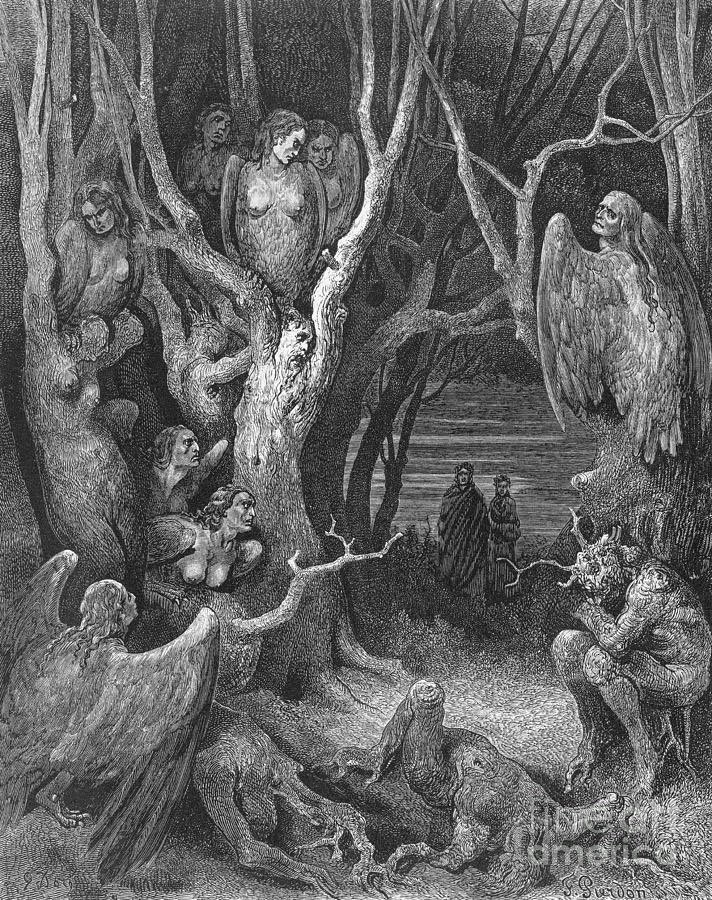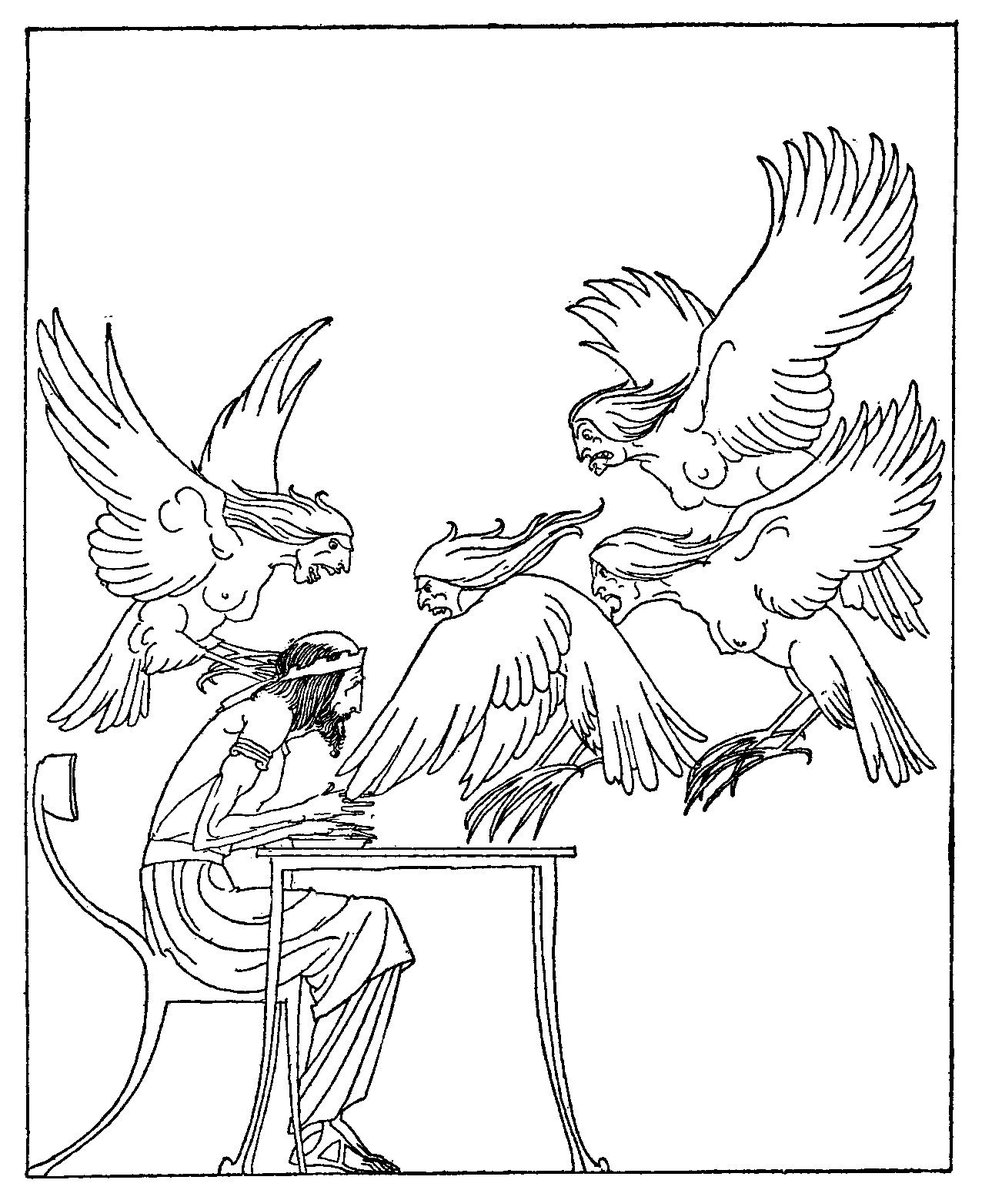Gustave Doré’s engraving of the Wood of Suicides, from Dante’s Inferno; Canto XIII
“There do the hideous Harpies make their nests / Who chased the Trojans from the Strophades / With sad announcement of impending doom...”
And yet...
@FolkloreThurs #FolkloreThursday
“There do the hideous Harpies make their nests / Who chased the Trojans from the Strophades / With sad announcement of impending doom...”
And yet...
@FolkloreThurs #FolkloreThursday
The harpies were not always hideous. Hesiod describes them as “fair-locked” with lovely hair and swift wings. Their name means “snatchers” and harpies were seen as servants of the Erinyes, snatching up evil doers and delivering them to the judgment of the Furies.
There are a number of named harpies; Aello ("storm swift"), Ocypete ("the swift wing"), Celaeno ("the dark") and Podarge ("fleet-foot").
Eventually, however, their vengeful services became identified with cruelty and Virgil describes them as “bird-bodied, girl-faced things; abominable their droppings, their hands are talons, their faces haggard with hunger insatiable".
This hunger became their defining trait and Zeus used harpies to punish Phineus’ misuse of prophecy. Blinded and marooned on an island, Phineus is surrounded by food which, as soon as he tries to eat it, is snatched from his hands by swooping harpies.
It’s easy to read a number of layers into this transformation but the agency and judgement of women being degraded into the nagging of an insane hag is perhaps the most striking.

 Read on Twitter
Read on Twitter



